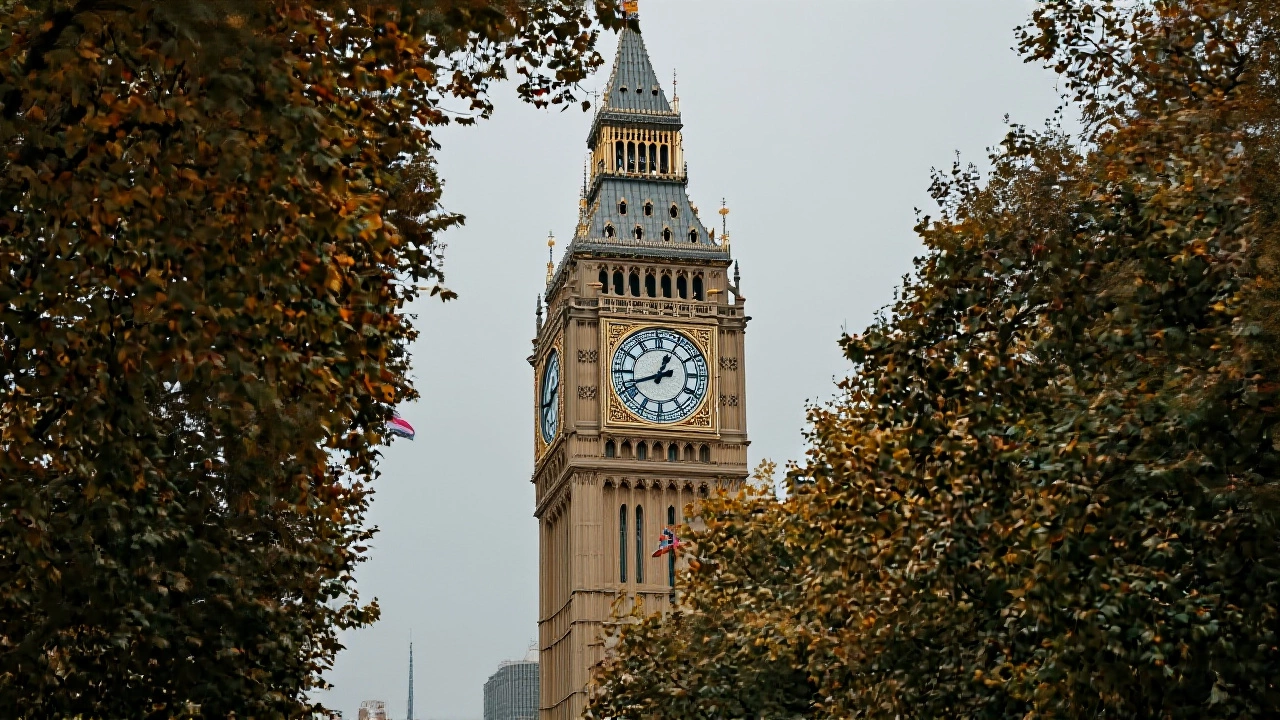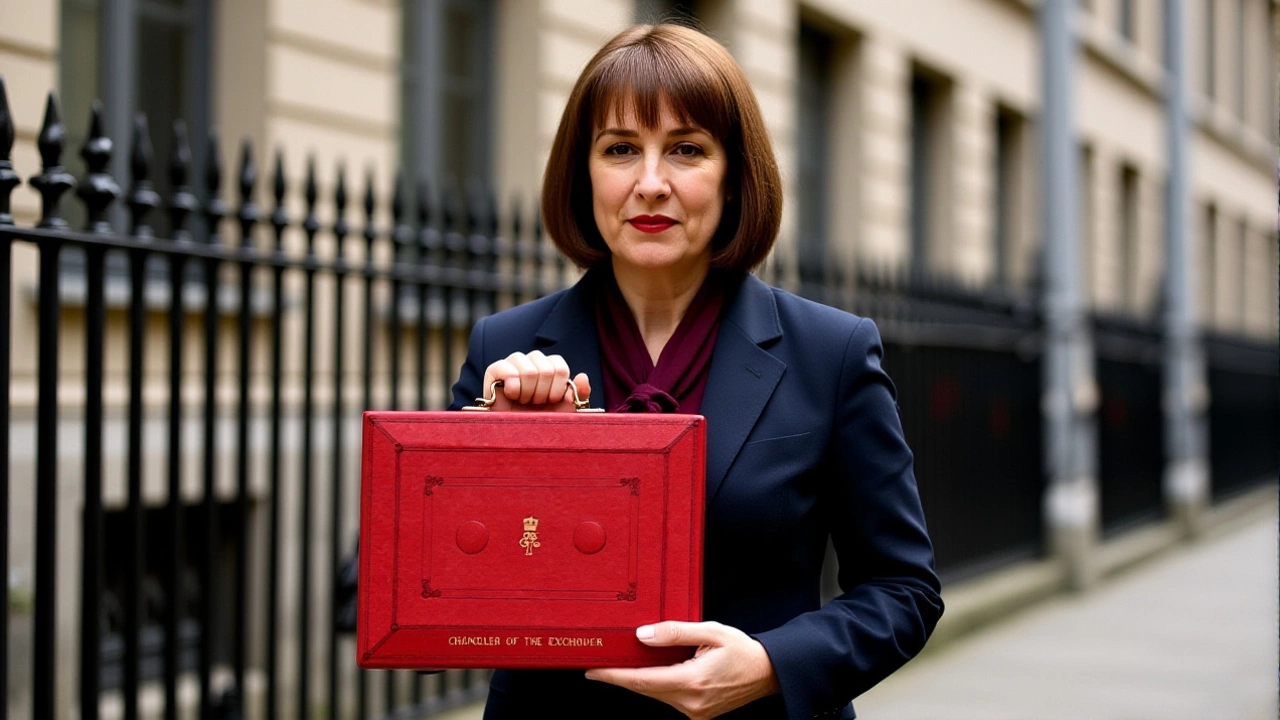After hiking taxes by £36 billion in 2024 — mostly through a sharp rise in employer national insurance contributions — Chancellor Rachel Reeves faces intense scrutiny as she prepares her second budget, due in either spring or autumn 2025. The Institute for Government, a respected non-partisan think tank based at 16 Great Queen Street, London, has laid out six critical areas to watch. This isn’t just another fiscal statement. It’s a test of whether the UK’s new Labour government can balance economic stability with social investment after one of the largest tax increases in modern British history.
Why the £36bn Hike Still Echoes
The 2024 budget, delivered just weeks after Reeves took office on 5 July 2024, wasn’t subtle. Her team raised taxes by exactly £36 billion, with employer national insurance contributions bearing the brunt. That’s not a rounding error — it’s the equivalent of £1,300 per working household, paid mostly by small and mid-sized businesses. The rate on earnings between £242 and £967 weekly jumped to 13.8%, a move that hit 2.7 million UK employers hard. Many small firms, already reeling from inflation and rising energy costs, saw payroll expenses spike overnight. One Sheffield-based manufacturer told the Financial Times it had to delay hiring two engineers — a decision that now echoes in regional job markets.What made this different from past hikes? It wasn’t just the size. It was the timing. Reeves inherited a £12 billion deficit and a public sector in need of repair. But she chose to raise revenue from employers, not consumers. That’s a political gamble. And it’s one that’s still being debated in pubs, boardrooms, and Westminster corridors.
The Six Things the IfG Says to Watch
The Institute for Government didn’t just list concerns — it pinpointed six specific pressure points for the 2025 budget:- Will employer NICs rise again? The 2024 hike was already the largest in a decade. Another increase could push more firms into the red.
- What happens to the public sector pay deal? Nurses, teachers, and police officers got modest raises in 2024. Will 2025 bring more — or will austerity creep back?
- Is there a plan for business investment? The UK’s productivity gap with Germany and France is widening. Will Reeves offer tax breaks for R&D or green tech?
- How will Scotland and Wales be affected? Devolved governments are watching closely. Any UK-wide tax change ripples into their budgets too.
- Will capital gains or inheritance tax be touched? So far, Reeves has avoided targeting wealth. But with the deficit still large, pressure is mounting.
- Is the Office for Budget Responsibility being fully trusted? The OBR’s forecasts have been wrong before. Will Reeves stick to them — or tweak them for political comfort?
These aren’t abstract policy questions. They’re daily realities for a shopkeeper in Cardiff, a startup founder in Manchester, and a retired nurse in Newcastle.

A Chancellor Under Pressure
Rachel Reeves, born in Croydon in 1979, is the first woman to hold the Chancellor’s office in its 800-year history. That’s historic. But history doesn’t protect you from economic reality. Her predecessor, Jeremy Hunt, was widely seen as cautious. Reeves has been bold — some say reckless. Her team has spent months behind closed doors, crunching numbers. But the public doesn’t care about spreadsheets. They care about whether their paychecks stretch further.And here’s the twist: while the £36 billion raised helped plug the deficit, it also cooled consumer spending. Retail sales in October 2024 were 0.9% lower than the same month in 2023. That’s not a blip — it’s a trend. Reeves now has to choose: stimulate growth or keep the books balanced?
What’s at Stake Beyond the Numbers
This isn’t just about revenue. It’s about trust. After years of political chaos — Brexit, pandemic, five prime ministers in seven years — voters wanted stability. Reeves promised it. But stability doesn’t come from bold tax hikes alone. It comes from clarity, consistency, and communication.Businesses are watching. Investors are watching. Even the Bank of England is watching. If Reeves signals another big tax rise in 2025, markets could react. Bond yields might climb. The pound could dip. And that would make mortgages, loans, and imports more expensive for everyone.
Meanwhile, Labour’s base is watching too. Younger voters expect climate action. Older voters want better healthcare. Working families need affordable childcare. Can Reeves deliver all of it — without breaking the bank?

The Road to April 2026
The 2025 budget will cover the fiscal year running from 6 April 2025 to 5 April 2026. That’s a tight window. Reeves has less than six months to decide. And she’s not starting from scratch. The IfG’s analysis shows she’s building on a foundation of pain — and opportunity.One insider told the BBC that Reeves is considering a targeted relief package for small businesses hit hardest by the 2024 NIC hike — perhaps a temporary reduction in the rate for firms with fewer than 10 employees. But that would cost money. And money, right now, is scarce.
What’s clear is this: the 2025 budget won’t just be a financial statement. It’ll be a political statement. About priorities. About fairness. About whether Britain is ready to pay more — and who should pay.
Frequently Asked Questions
How did the £36bn tax hike affect small businesses in the UK?
The £36 billion tax increase in 2024, largely driven by higher employer national insurance contributions, hit small firms hardest. With 2.7 million UK employers paying the rate, many reported delayed hiring, reduced hours, or postponed investments. A survey by the Federation of Small Businesses found 37% of firms with under 20 employees cut back on non-essential spending — including training and equipment upgrades — to offset the cost.
Why is the Institute for Government’s analysis important?
The Institute for Government is a non-partisan research body with deep access to civil service data and policy history. Unlike political commentators, it doesn’t lobby or endorse. Its six-point framework is based on public records, past budget outcomes, and institutional memory — making it one of the most credible pre-budget guides available. Policymakers and journalists treat it as gospel.
What’s the difference between employer and employee National Insurance?
Employer NICs are paid by businesses on top of wages — currently at 13.8% on earnings between £242 and £967 weekly. Employee NICs are deducted directly from workers’ paychecks at a lower rate (8% in the same band). The 2024 hike targeted the employer side, meaning businesses absorbed the cost — not employees. That’s why it sparked more backlash from firms than from workers.
Could Rachel Reeves raise income tax instead in 2025?
She could — but it’s politically risky. Raising income tax affects voters directly, and Labour’s 2024 election win relied heavily on middle-income households. Reeves has publicly ruled out increasing the basic or higher rates. Instead, she may look at closing loopholes — like capital gains exemptions or pension tax relief — which affect wealthier groups without touching most workers’ paychecks.
How does the 2025 budget compare to previous Labour budgets?
The 2025 budget will be the first Labour budget since 2010. Gordon Brown’s final budget in 2010 raised VAT to 20% and froze public spending. Reeves is taking a different path — prioritizing employer contributions over consumer taxes. But like Brown, she’s operating under tight fiscal constraints. The scale of the 2024 hike — £36bn — makes 2025’s choices even harder.
What happens if the 2025 budget misses its deficit targets?
If the Office for Budget Responsibility (OBR) finds the deficit is still above 3% of GDP, markets could react with higher borrowing costs. The Bank of England might delay interest rate cuts. And the government could face pressure to implement emergency cuts — possibly to welfare or local services. That would risk public backlash, especially if it follows a year of tax increases.
